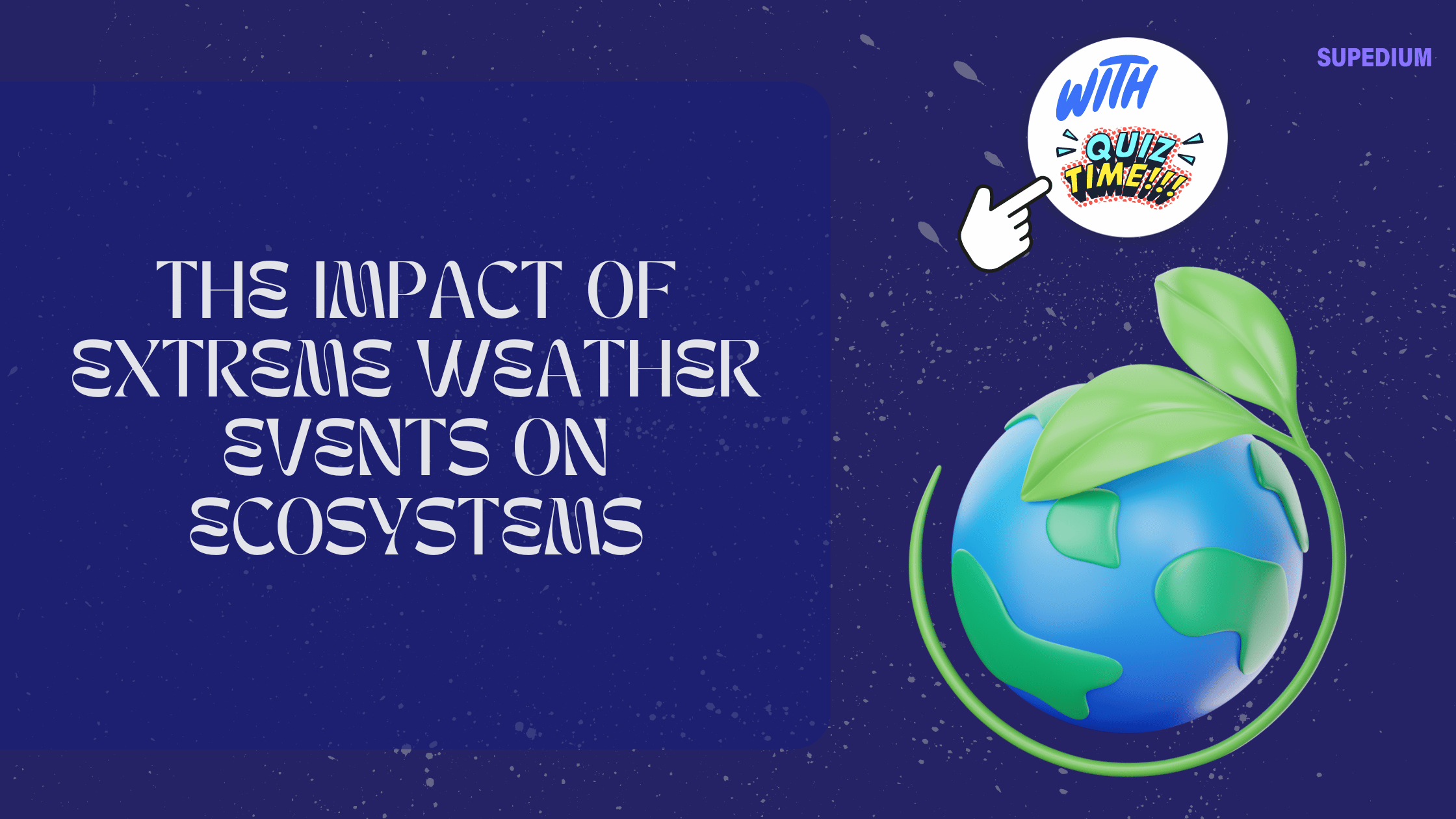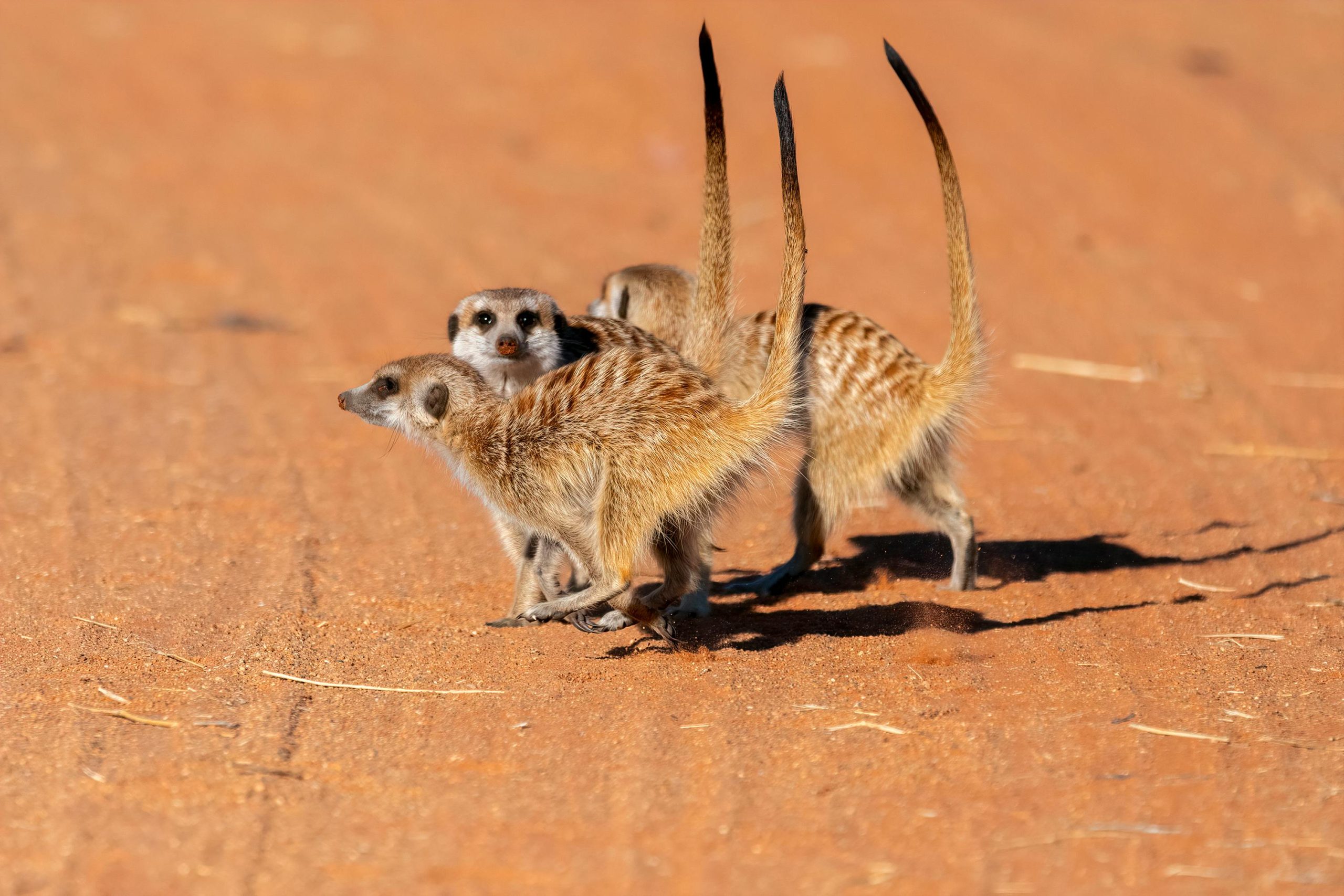Table of Contents
![]()
I. Introduction
Extreme weather events, including heatwaves, hurricanes, floods, droughts, and severe storms, have become increasingly frequent and intense due to climate change. These events significantly affect ecosystems, which are complex networks of living organisms interacting with their environment. Understanding the impact of these extreme weather events on ecosystems is crucial because ecosystems provide essential services such as clean air and water, pollination of crops, and climate regulation. Moreover, they support biodiversity and human well-being. This article explores how extreme weather events affect terrestrial and aquatic ecosystems and examines adaptation strategies and case studies to highlight the broader implications.
II. Effects on Terrestrial Ecosystems
A. Forest Ecosystems
Impact of Heatwaves: Heatwaves can drastically affect forest ecosystems by increasing the risk of wildfires. Elevated temperatures and prolonged heat stress trees, making them more susceptible to pests and diseases. Additionally, heatwaves can lead to reduced growth rates and decreased water availability, compounding the stress on forest vegetation.
Effects of Hurricanes: Hurricanes cause significant damage to forest ecosystems through strong winds, heavy rainfall, and storm surges. These events can result in tree falls, canopy damage, and soil erosion. The loss of canopy cover affects the microclimate and soil conditions, which can alter species composition and forest structure.
Impact of Droughts: Droughts reduce water availability, which can lead to decreased forest productivity and increased tree mortality. Prolonged drought conditions may alter species composition, favoring drought-tolerant species over others. Soil health can also deteriorate, affecting nutrient cycling and forest regeneration.
B. Grasslands and Savannas
Effects of Floods: Flooding in grasslands and savannas can change plant community structures by causing soil erosion and nutrient loss. High water levels can lead to the loss of key plant species and disrupt the habitats of grazing animals. Floods can also lead to the spread of invasive plant species, further altering ecosystem dynamics.
Impact of Droughts: Droughts in these ecosystems result in reduced vegetation cover and decreased food availability for herbivores. Prolonged drought can lead to increased vulnerability to invasive species, which may outcompete native plants and alter the ecosystem balance.
C. Deserts
Impact of Extreme Rainfall Events: In deserts, extreme rainfall can lead to rapid vegetation growth, followed by die-off as conditions return to dry. This can disrupt the natural balance of the ecosystem, affecting nutrient cycling and soil health. Additionally, the sudden influx of water can lead to erosion and habitat degradation.
Effects of Heatwaves: Heatwaves in desert ecosystems stress both animal and plant species. Plants may suffer from dehydration and reduced growth, while animals face increased physiological stress. Heatwaves can also alter species distributions, pushing some species to migrate in search of more favorable conditions.
III. Effects on Aquatic Ecosystems
A. Freshwater Ecosystems
Impact of Floods: Flooding affects freshwater ecosystems by altering river flow and sediment distribution. This can lead to habitat destruction, changes in water quality, and impacts on aquatic species. For example, fish populations may be affected by changes in breeding grounds and food availability.
Effects of Droughts: Droughts reduce water levels in freshwater systems, leading to habitat loss and decreased water quality. Lower water levels can increase water temperature and decrease oxygen levels, adversely affecting aquatic life. Additionally, the reduction in water flow can disrupt migratory patterns of fish and other species.
B. Marine Ecosystems
Impact of Hurricanes/Typhoons: Hurricanes and typhoons cause substantial damage to marine ecosystems, particularly coral reefs. Strong waves and storm surges can lead to coral breakage and sedimentation, which smothers corals and disrupts marine habitats. The destruction of coral reefs affects the biodiversity of marine life and the stability of the ecosystem.
Effects of Heatwaves (Marine Heatwaves): Marine heatwaves cause coral bleaching, where corals expel the symbiotic algae living in their tissues due to high temperatures. This leads to the loss of color and vital nutrients for the corals. Additionally, marine heatwaves can shift species distributions, impacting marine food webs and ecosystem services.
C. Estuaries and Wetlands
Impact of Floods: Flooding affects estuaries and wetlands by altering sediment deposition and nutrient loading. These changes can impact bird and fish populations by affecting breeding sites and food sources. Flooding can also lead to increased salinity in estuaries, which can affect species adapted to specific salinity ranges.
Effects of Droughts: Droughts reduce wetland areas and can lead to habitat loss for many species. Lower water levels can impact the availability of breeding and feeding grounds for birds and aquatic animals. Additionally, droughts can alter the nutrient dynamics of wetlands, affecting the overall health and productivity of these ecosystems.
IV. Adaptive Responses and Resilience
A. Natural Adaptations
Evolutionary Adaptations: Species may evolve new traits or behaviors to cope with extreme weather events. For instance, plants may develop deeper root systems to access water during droughts, while animals may alter their migration patterns to avoid heatwaves or floods.
Natural Regeneration Processes: Ecosystems have natural processes of regeneration and recovery. For example, forests may regrow after a fire, and wetlands may recover from droughts through sediment deposition and water replenishment.
B. Ecosystem Management and Restoration
Strategies for Improving Resilience: Effective management strategies include sustainable land and water use practices, conservation of critical habitats, and restoration of degraded areas. For example, reforestation and wetland restoration can help enhance ecosystem resilience to extreme weather events.
Role of Conservation Efforts: Conservation efforts are crucial in protecting ecosystems from extreme weather impacts. Creating ecological corridors and protected areas can help species migrate and adapt to changing conditions. Additionally, conservation programs can focus on preserving biodiversity and maintaining ecosystem functions.
V. Case Studies
A. The Australian Bushfires (2019-2020)
The Australian bushfires of 2019-2020 had a profound impact on forest ecosystems and biodiversity. The fires burned vast areas, leading to the loss of habitat for numerous species and the destruction of critical ecosystems. Recovery efforts have included habitat restoration and the reintroduction of fire-resistant plant species.
B. Hurricane Katrina (2005)
Hurricane Katrina caused extensive damage to coastal wetlands and marine environments in the Gulf of Mexico. The hurricane’s storm surge led to the loss of wetland areas, which are crucial for protecting coastlines and supporting marine life. Recovery efforts have focused on wetland restoration and improved flood protection measures.
C. The 2011 East African Drought
The 2011 East African drought severely impacted grasslands and human communities. Reduced vegetation cover and water availability affected food security and wildlife populations. Response efforts included drought management strategies and the development of early warning systems to mitigate future impacts.
VI. Conclusion
Extreme weather events have significant and multifaceted impacts on ecosystems. These events disrupt ecological balance, affect biodiversity, and alter ecosystem services. Understanding these impacts is essential for developing effective adaptation and management strategies. Continued research, monitoring, and conservation efforts are crucial in building ecosystem resilience and mitigating the effects of extreme weather events. By taking proactive measures, we can help ensure that ecosystems continue to thrive in the face of a changing climate.






Be the first to comment